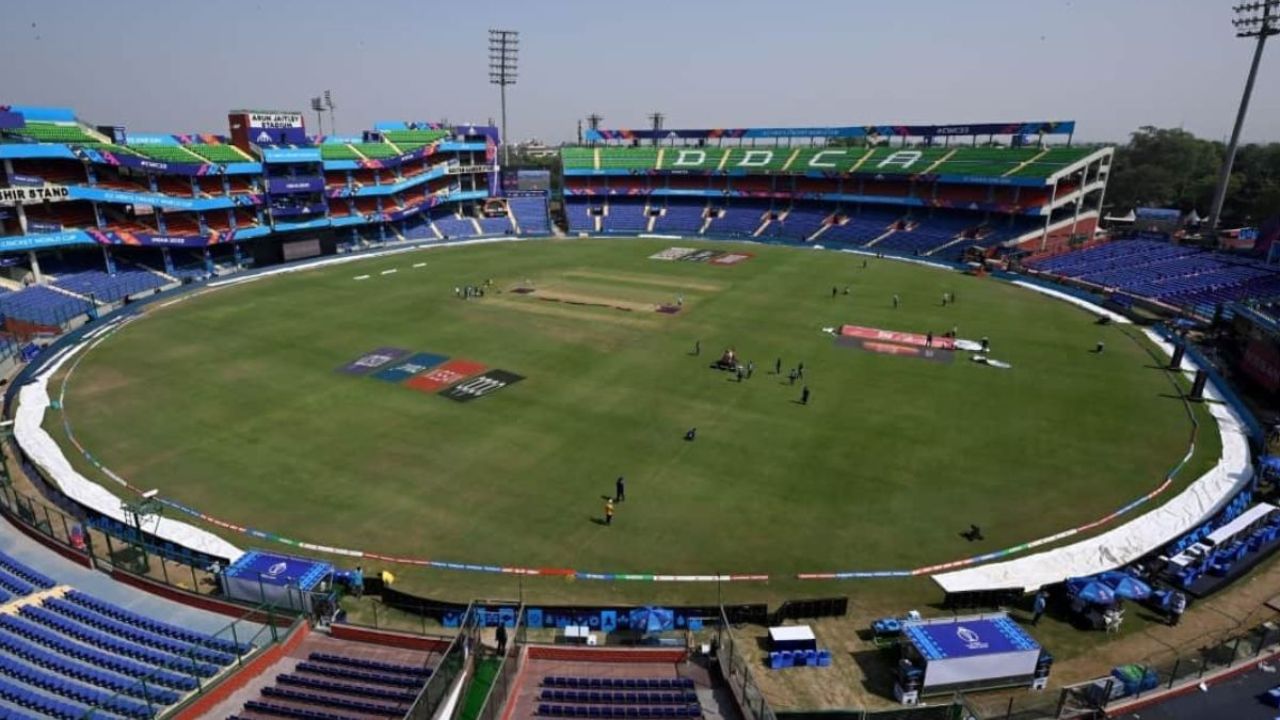Introduction
The Arun Jaitley Stadium, formerly known as the Feroz Shah Kotla Stadium, is one of the most iconic cricket grounds in India. Located in New Delhi, the stadium has been a witness to numerous historic moments in cricket. Understanding the pitch conditions at this stadium is crucial for teams and players as it can significantly influence the outcome of a match. This article provides an in-depth analysis of the pitch report for the Arun Jaitley Stadium, covering its characteristics across various formats of the game.
| Aspect | Details |
| Location | New Delhi, India |
| Capacity | 41,820 |
| Established | 1883 |
| Owned by | Delhi & District Cricket Association (DDCA) |
| Formerly known as | Feroz Shah Kotla Ground |
| Pitch Nature | Typically slow and low |
| Ideal for | Spinners |
| Average 1st innings score | Around 160-170 (T20), 260-280 (ODI) |
| Recent changes | Pitch renovations in recent years |
| Best batting conditions | Early overs of the match (for T20 and ODI) |
| Best bowling conditions | Spin bowlers in the middle overs |
| Famous Matches | 2011 World Cup matches, IPL fixtures |
| Weather conditions | Generally hot and humid, especially during IPL season |
| Historic moments | Anil Kumble’s 10 wickets in an innings against Pakistan |
| Notable records | Highest T20I total (by any team) |
| Recommended strategy | Bat first, capitalize on early overs, leverage spin later |
Historical Background
The Arun Jaitley Stadium, established in 1883, has undergone several renovations and upgrades to accommodate modern cricket requirements. It was renamed in 2019 in honor of Arun Jaitley, the former Finance Minister of India, who was also a key figure in the Delhi and District Cricket Association (DDCA).
Pitch Characteristics
Nature of the Pitch
The pitch at the Arun Jaitley Stadium is traditionally known for being slow and low. It tends to favor spinners as the match progresses, making it a challenging surface for batsmen, especially in the latter stages of the game. However, recent pitch preparations have seen efforts to make it more balanced to provide equal opportunities for both batsmen and bowlers.
Bounce and Pace
The pitch generally offers low bounce and moderate pace. Fast bowlers might find some assistance with the new ball, but as the ball gets older, the surface tends to favor slower bowlers. The lack of consistent bounce can make it tricky for batsmen to play their shots freely.
Spin-Friendly Conditions
Historically, spinners have enjoyed bowling at this venue. The dry nature of the pitch and the prevailing weather conditions in Delhi contribute to significant turn and grip for the spinners. Batsmen often need to be cautious and play with soft hands to negotiate the spin threat effectively.
Performance in Different Formats
Test Matches
In Test matches, the pitch at the Arun Jaitley Stadium typically becomes more difficult for batting as the game progresses. The first two days usually offer decent conditions for batting, with the pitch gradually deteriorating from Day 3 onwards. Spinners play a crucial role, and teams winning the toss often prefer to bat first to take advantage of the relatively better batting conditions early on.
Notable Test Performances:
- Anil Kumble’s 10-wicket haul against Pakistan in 1999.
- Virender Sehwag’s triple century against South Africa in 2008.
One Day Internationals (ODIs)
In ODIs, the pitch tends to support batsmen initially, but spinners come into play during the middle overs. The par score at this venue is around 250-270, but teams have successfully chased higher totals with smart batting. Dew can be a factor in day-night matches, making it slightly easier for the team batting second.
Notable ODI Performances:
- Sachin Tendulkar’s 200th ODI match in 2013.
- Rohit Sharma’s century against Australia in 2016.
Twenty20 Internationals (T20Is)
The pitch in T20 matches generally remains true, providing an even contest between bat and ball. The shorter format sees higher scoring games, with batsmen able to take advantage of the shorter boundaries and fast outfield. However, spinners still play a vital role, especially in the middle overs.
Notable T20I Performances:
- Yuvraj Singh’s six sixes in an over against England in the 2007 T20 World Cup.
- Virat Kohli’s brilliant innings against Australia in the 2016 T20 World Cup.
Weather Conditions
The weather in Delhi can be extreme, with scorching heat in the summers and cold winters. The best time for cricket matches is during the cooler months from October to March. During this period, the pitch tends to be more predictable, offering a fair contest between bat and ball. The monsoon season, from June to September, can lead to interruptions and a damp outfield.
Strategies for Success
For Batsmen
- Early Overs: Batsmen should capitalize on the relatively easier conditions in the first few overs when the ball is new.
- Spin Management: It’s crucial to have a solid technique against spin bowling. Using the feet and sweeping can be effective strategies.
- Patience: Given the low bounce, patience is key. Batsmen should focus on playing along the ground and waiting for loose deliveries.
For Bowlers
- Fast Bowlers: Utilize the new ball to extract any available seam movement. Focusing on variations like slower balls and cutters can be effective as the ball gets older.
- Spinners: Spinners should aim to bowl a tight line and length, exploiting the natural variations of the pitch. Flighting the ball can induce mistakes from batsmen.
Conclusion
The Arun Jaitley Stadium offers a unique challenge for cricketers with its slow and low pitch. While spinners are likely to dominate, smart batting and disciplined bowling can lead to success. Understanding the pitch conditions and adapting strategies accordingly is crucial for teams playing at this historic venue.
